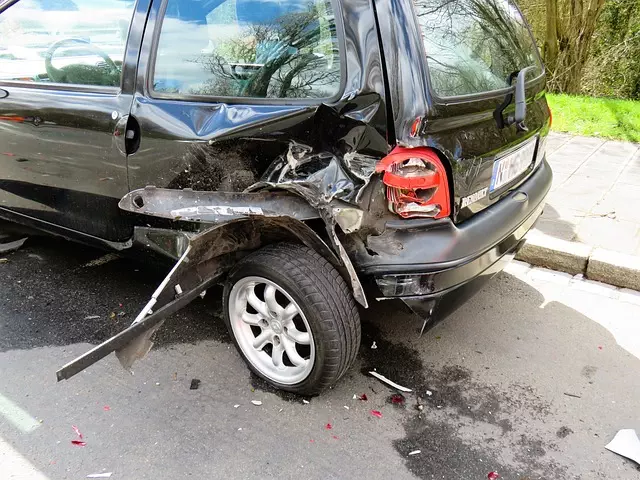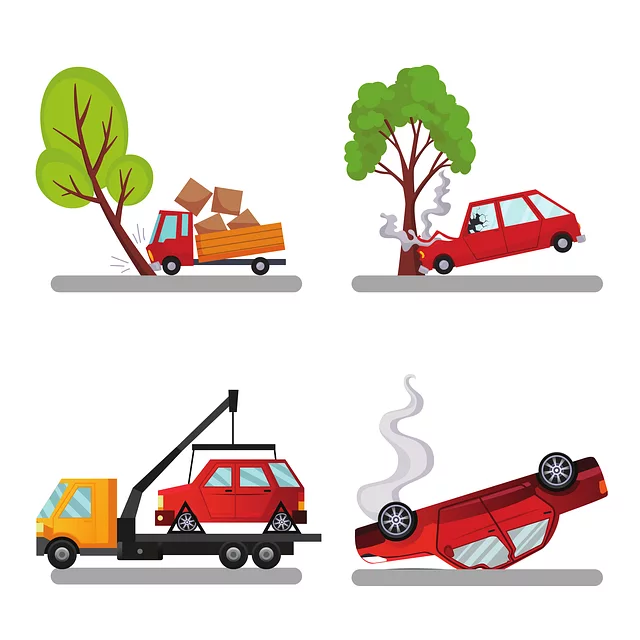Slip and Fall Lawyer Queens: Navigating Wet Floor Accidents & Claims

Slip and fall accidents in Queens and Manhattan are governed by specific legal principles, with negl…….
In the fast-paced, ever-evolving world of insurance, understanding car accident claims procedures is paramount, especially in a bustling metropolis like Manhattan. This article delves into the intricate process of navigating car accident insurance claims specific to Manhattan, exploring its unique dynamics, significance, and impact on both individuals and the industry. By the end, readers will grasp the critical aspects, challenges, and future prospects of this essential aspect of personal finance and risk management.
Car accident insurance claims in Manhattan refer to the process by which individuals seek financial compensation for damages incurred in motor vehicle collisions within the city’s boundaries. This includes coverage for medical expenses, property damage, and liability for bodily injury or death caused to others involved in the accident. The core components of such claims typically involve:
Policy Coverage: Drivers in Manhattan must possess valid auto insurance policies that comply with state regulations. These policies outline the level of coverage, deductibles, and exclusions.
Accident Reporting: Prompt reporting of accidents to insurance providers is crucial. New York State law requires drivers involved in accidents resulting in damage over $1000 or injuries to notify their insurers within 24 hours.
Documentation: Gathering comprehensive documentation is essential. This includes police reports, medical records, repair estimates for vehicle damage, and witness statements.
Claim Filing: Insured individuals submit claim applications to their insurance companies, providing details of the accident and associated losses.
The concept of car accident insurance claims has evolved over time, reflecting changes in transportation regulations and societal needs. In New York City, including Manhattan, the development of robust insurance claims procedures can be traced back to the late 20th century when motor vehicle accidents became a significant public safety concern. The city’s dense population and heavy traffic volumes necessitated stringent measures to ensure fair compensation for accident victims.
Over time, the process has been refined through legislative reforms, industry innovations, and increased consumer awareness. Today, Manhattan’s car accident insurance claims serve as a critical safety net for drivers, offering financial protection during what can be traumatic experiences. The system encourages responsible driving behavior by ensuring accountability and providing a mechanism for victims to seek justice and recover from accidents.
Car accident insurance claims are not confined to Manhattan; they are a global phenomenon with varying dynamics across regions. Here’s a glimpse into the international influence and trends:
North America: The United States, including New York State, has a robust no-fault insurance system, where drivers are required to carry personal injury protection (PIP) coverage. This ensures that accident victims receive medical benefits regardless of fault. Canada also operates on similar lines, with each province having its own regulations.
Europe: European Union countries have diverse systems. Some follow the US model with compulsory insurance, while others emphasize third-party liability insurance, ensuring compensation for harm caused to others. The UK, for instance, has a mixed system where all drivers must have insurance, but optional extras cover different aspects of accident claims.
Asia: Countries like Japan and South Korea have mandatory auto insurance systems similar to the US. China, however, operates with a combination of mandatory third-party liability insurance and voluntary comprehensive coverage.
Emerging Trends: Globally, there’s a growing emphasis on no-fault insurance to streamline claims processes and reduce administrative costs. Additionally, technology is transforming claim handling through digital platforms, enhancing efficiency and customer satisfaction.
The car accident insurance claims landscape in Manhattan is deeply intertwined with the city’s economic fabric. Here’s an analysis of its economic aspects:
| Aspect | Description | Impact |
|---|---|---|
| Market Size: Manhattan’s dense population and high vehicle ownership contribute to a substantial market for auto insurance. According to industry reports, New York State’s auto insurance market is among the largest in the nation. | A robust market attracts various insurers, fostering competition and potentially driving down premiums for consumers. | Competitive markets can lead to more affordable insurance options for drivers. |
| Investment Patterns: Insurers invest a significant portion of their funds in diverse portfolios, including stocks, bonds, and real estate. This investment activity contributes to the city’s economic growth and diversification. | Insurers’ investments have a ripple effect on Manhattan’s financial markets, influencing stock prices and economic trends. | Wise investment strategies can enhance insurers’ financial stability during market downturns. |
| Economic Impact of Claims: Car accident claims have both positive and negative economic effects. While they involve significant costs for insurers, they also stimulate the economy through repairs, medical services, and legal fees. | The city’s robust service sector, including auto repair shops, hospitals, and law firms, benefits from these claims. | Effective claims management by insurers can minimize fraud and ensure efficient payouts, benefiting the broader economy. |
Technology plays a pivotal role in modernizing car accident insurance claims processes in Manhattan:
Digital Claim Filing: Insurers now offer online platforms for policyholders to file claims, upload documents, and track their progress. This digital transformation streamlines the process, reducing paperwork and processing times.
Telematics and Telehealth: Telematics devices in vehicles allow insurers to monitor driving behavior, offering discounts for safe driving. Telehealth services enable virtual consultations for minor injuries at accident scenes, accelerating claim settlements.
AI and Machine Learning: Artificial intelligence is employed to detect fraudulent claims by analyzing patterns and anomalies in data. Machine learning algorithms enhance predictive analytics, helping insurers assess risk more accurately.
Blockchain for Records: Blockchain technology has the potential to revolutionize record-keeping by providing secure, tamper-proof digital records of insurance policies, claims, and settlements. This could improve transparency and efficiency.
Despite advancements, car accident insurance claims face several challenges in Manhattan:
Complex Liability Issues: Manhattan’s dense traffic and high pedestrian volume often lead to complex liability scenarios, especially in cases involving multiple parties. Determining fault can be challenging and time-consuming.
Fraud Concerns: Insurance fraud is a global concern, and Manhattan is no exception. Insurers employ sophisticated anti-fraud measures, but the potential for false claims remains a challenge.
Increasing Claims Costs: Rising medical costs and litigation expenses contribute to higher claim payouts, impacting insurers’ profitability. This can lead to rate adjustments, affecting policyholder budgets.
Regulatory Compliance: Insurers must navigate a complex web of state and local regulations, ensuring compliance with New York’s insurance laws and guidelines.
The future of car accident insurance claims in Manhattan is shaped by technological innovations and evolving consumer expectations:
Autonomous Vehicles: The rise of autonomous vehicles could significantly impact claims processes. As self-driving cars reduce human error, liability issues may shift, requiring new policies and regulations.
Real-Time Claims Processing: Emerging technologies promise real-time claim settlements, with instant payouts for minor accidents. This would enhance customer satisfaction and streamline the overall process.
Personalized Insurance: Insurers may offer more tailored policies based on individual driving behavior, reflecting safe or risky driving patterns. This could lead to customized coverage and rates.
Increased Digital Engagement: Policyholders are likely to demand more digital interaction with insurers, including chatbots for quick inquiries and advanced mobile apps for comprehensive claim management.
Car accident insurance claims in Manhattan are a complex yet vital component of the city’s financial ecosystem. Understanding their intricacies empowers drivers to navigate the process effectively while encouraging safe driving behaviors. As technology continues to evolve, so too will the landscape of auto insurance claims, shaping a more efficient and responsive system for all New Yorkers.

Slip and fall accidents in Queens and Manhattan are governed by specific legal principles, with negl…….

Whiplash injuries, commonly overlooked in urban car accidents like those in Manhattan, can lead to c…….

In Manhattan, understanding cyclist rights and responsibilities is crucial for preventing car accide…….

Car accident insurance claims in Manhattan and Queens, New York, involve distinct processes. No-faul…….

Birth injuries caused by medical negligence in NYC can have lasting effects on families. Understandi…….

In The Bronx, falls from heights pose a significant risk, leading to high rates of construction site…….

The increasing popularity of rideshare services like Uber and Lyft in Manhattan has led to a rise in…….

Slip and fall accidents in Queens are common, often caused by winter conditions like icy sidewalks a…….

Navigating car accident insurance claims in Manhattan requires understanding policy details, documen…….

Pedestrian accidents in The Bronx, NY, are common personal injury cases with intricate legal aspects…….